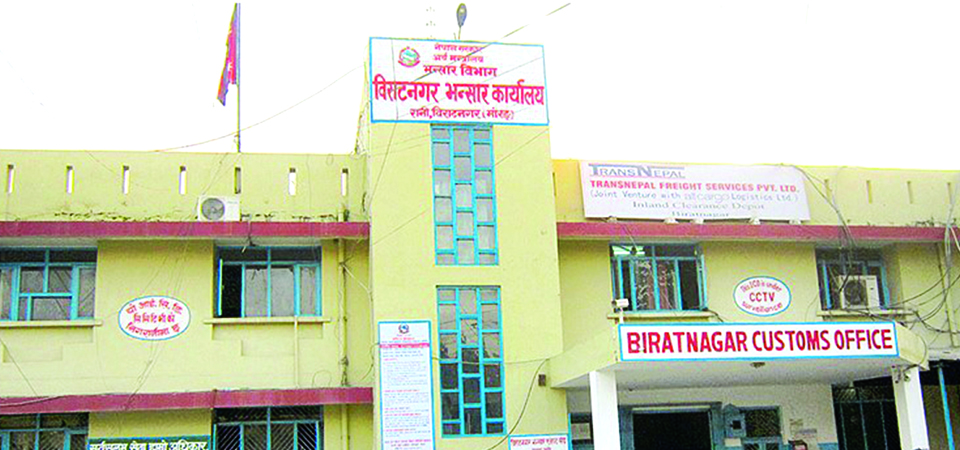Revenue collection improves

By Modnath Dhakal
Kathmandu, Feb. 3: Increased development work across the country and escalation in consumption in the post-COVID-19 situation has resulted in better revenue collection.
Surpassing the rate of the previous year, government revenue collection has reached 45.34 per cent in the seven and a half months of the current fiscal year. It was 41.39 per cent during the same period last year.
Former Finance Secretary Dr. Shanta Raj Subedi said that the increased development and construction works across the country and consumption have supported the growth in revenue mobilisation.
“Import of goods that have high customs duty such as vehicle has increased. At the same time, there has been reform in customs valuation. It also contributed to the growth,” he said.
Revenue collection is Rs. 458.75 billion by Monday, February 1, according to the budgetary status of the Financial Comptroller General Office (FCGO). It is 45.34 per cent of the total revenue target of Rs. 1011.75 billion for the current FY 2020/21.
Of the total collection, size of tax revenue is Rs. 421.26 billion and non-tax revenue Rs. 37.48 billion. Spokesperson of the Ministry of Finance Dr. Ram Prasad Ghimire said that improvement in the collection of customs duties in the post-COVID-19 period had pushed the revenue up.
“The improved revenue collection is the reflection of better economic situation in the country. Economic activities have increased while the confidence of the business sector has also gone up,” he said.
Although the revenue collection during the same period in the last fiscal year was 41.39 per cent, the total revenue target was higher than that of the current year, amounting to Rs. 1112.03 billion.
It means the government this year has comparatively a comfortable target in terms of revenue collection.
“But economic activities have increased even better than the earlier estimation which also has had a favourable impact in income tax and Value Added Tax collection,” said Dr. Subedi.
According to him, the psychology of the private sector had also contributed to the growth. Last year, there was a fear of coronavirus infection in Nepal by the end of the first half of the fiscal year, that happens during mid-January, so the entrepreneurs submitted lower estimated of their transaction and paid less taxes. But by mid-January this year, they have good business prospects and better confidence so submitted higher estimation of their incomes and paid more taxes.
Due to the coronavirus pandemic, the revenue collection was only about 70 per cent of the total target last year. Of the total target of Rs. 1009 billion, Rs. 700 billion was collected by July 15.
Meanwhile, expenditure this year has remained lower than that of the last year. By Monday, the government had spent 28.76 per cent of the Rs. 1532.96 billion. Expenditure during the same period last year was 31.77 per cent of Rs. 1274.64 billion.
Capital expenditure has remained sluggish with just 16.41 per cent mobilisation.
Recent News

Do not make expressions casting dout on election: EC
14 Apr, 2022
CM Bhatta says may New Year 2079 BS inspire positive thinking
14 Apr, 2022
Three new cases, 44 recoveries in 24 hours
14 Apr, 2022
689 climbers of 84 teams so far acquire permits for climbing various peaks this spring season
14 Apr, 2022
How the rising cost of living crisis is impacting Nepal
14 Apr, 2022
US military confirms an interstellar meteor collided with Earth
14 Apr, 2022
Valneva Covid vaccine approved for use in UK
14 Apr, 2022
Chair Prachanda highlights need of unity among Maoist, Communist forces
14 Apr, 2022
Ranbir Kapoor and Alia Bhatt: Bollywood toasts star couple on wedding
14 Apr, 2022
President Bhandari confers decorations (Photo Feature)
14 Apr, 2022










